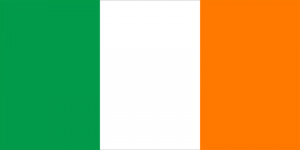Language/Irish/Culture/Irish-Myths-and-Legends
| ◀️ Famous Irish Authors — Previous Lesson |
Irish myths and legends are ancient stories that have been passed on through generations. They are an integral part of Irish folklore and reflect the country's history, culture, and beliefs. In this lesson, you will discover some of the most famous Irish myths and legends, such as the Children of Lir and Cú Chulainn.
Overview
Irish myths and legends have their roots in Celtic mythology, which was the dominant religion in Ireland before Christianity. These stories were originally passed down through oral tradition, and it was only after the introduction of Christianity that they were written down. Despite this, they still retain their ancient, mystical quality and have continued to be an important part of Irish culture.
Many of these myths and legends feature gods and goddesses, heroes and heroines, and supernatural creatures such as fairies and leprechauns. They often deal with themes of love, revenge, and betrayal, and are filled with magic, adventure, and tragedy.
The Children of Lir
One of the most enduring Irish myths is the story of the Children of Lir. This tragic tale tells of four children who are turned into swans by their jealous stepmother and must spend 900 years wandering the lakes and rivers of Ireland before they can regain their human form.
The story begins with King Lir, who is married to a beautiful woman named Aífe. They have four children: Fionnuala, Aodh, Fiachra, and Conn. After Aífe's death, Lir marries her sister, Aoife, who is jealous of the children and decides to turn them into swans. She casts a spell that will last for 900 years, during which time they will live as swans and be unable to speak.
The children spend the next 300 years on Lake Derravaragh, followed by another 300 years on the Sea of Moyle, which separates Ireland from Scotland. During this time, they are protected by the goddess Danu and are visited by various heroes and heroines.
Finally, after 900 years, the spell is broken and the children are allowed to regain their human form. However, they have aged, and when they return to Ireland they find that 900 years have passed and that their beloved homeland is now a Christian country. They eventually die and are buried together in a single grave.
Cú Chulainn
Cú Chulainn is one of the greatest heroes of Irish mythology. He is a warrior who possesses great strength and courage, and who is blessed with supernatural abilities. His story is filled with battles, love affairs, and tragedy, and has been retold in countless forms throughout Irish history.
Cú Chulainn's legend begins with his birth, which is said to have been miraculous. His mother, Deichtine, was kidnapped by the god Lugh and taken to his stronghold. There she gave birth to Cú Chulainn, who was raised by Lugh and became a great warrior in his own right.
As a young man, Cú Chulainn falls in love with the beautiful Emer and must undertake various tasks to win her hand in marriage. He then goes on to fight in many battles, including the famous Táin Bó Cúailnge, in which he singlehandedly defends Ulster against the forces of Queen Maeve.
Cú Chulainn's story ends tragically, however. He is eventually killed in battle and dies tied to a stone, his sword raised in defiance.
Other Myths and Legends
There are many other Irish myths and legends that are worth exploring. Some of the most famous include:
- The legend of the Banshee, a female spirit who is said to wail outside the homes of those who are about to die.
- The story of Diarmuid and Gráinne, a tragic tale of love and betrayal.
- The legend of Oisín and Niamh, which tells of a warrior who falls in love with a fairy queen and is taken to the Otherworld.
- The myth of the Giant's Causeway, which explains how the famous rock formations along the coast of Northern Ireland were formed.
Conclusion
Irish myths and legends are an important part of the country's cultural heritage. They reflect its history, values, and beliefs, and continue to be told and retold to this day. By exploring these ancient stories, you can gain a deeper understanding and appreciation of Irish culture and folklore.
Remember that in the following lesson, we will cover "Irish Literature", which includes famous Irish writers and poets who contributed to the richness of Irish culture and language.
Videos
Top 10 Creepy Irish Myths and Legends - YouTube
Why Isn't Irish Mythology More Popular? — Irish Mythology Series ...
Werewolves of Ossory | Irish Myth - YouTube
Irish Storytelling - Myths and Legends - Labhraidh Loingseach ...
Irish Myth Cycles - YouTube
Other Lessons
- Ireland Timeline
- Interesting aspects of the Irish language
- Irish Music and Dance
- Overview of Irish History
- Famous Irish Authors
Sources
- The 10 most famous MYTHS and LEGENDS from Irish folklore
- Irish Mythology: 12 Mighty Myths For 2023 (Enjoy)
- Irish mythology - Wikipedia
| ◀️ Famous Irish Authors — Previous Lesson |

